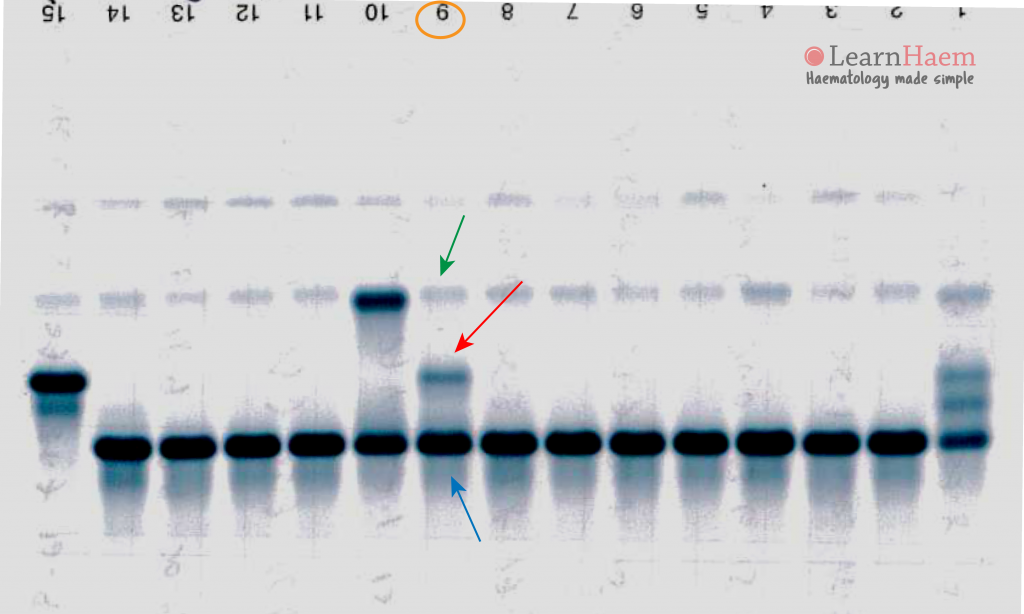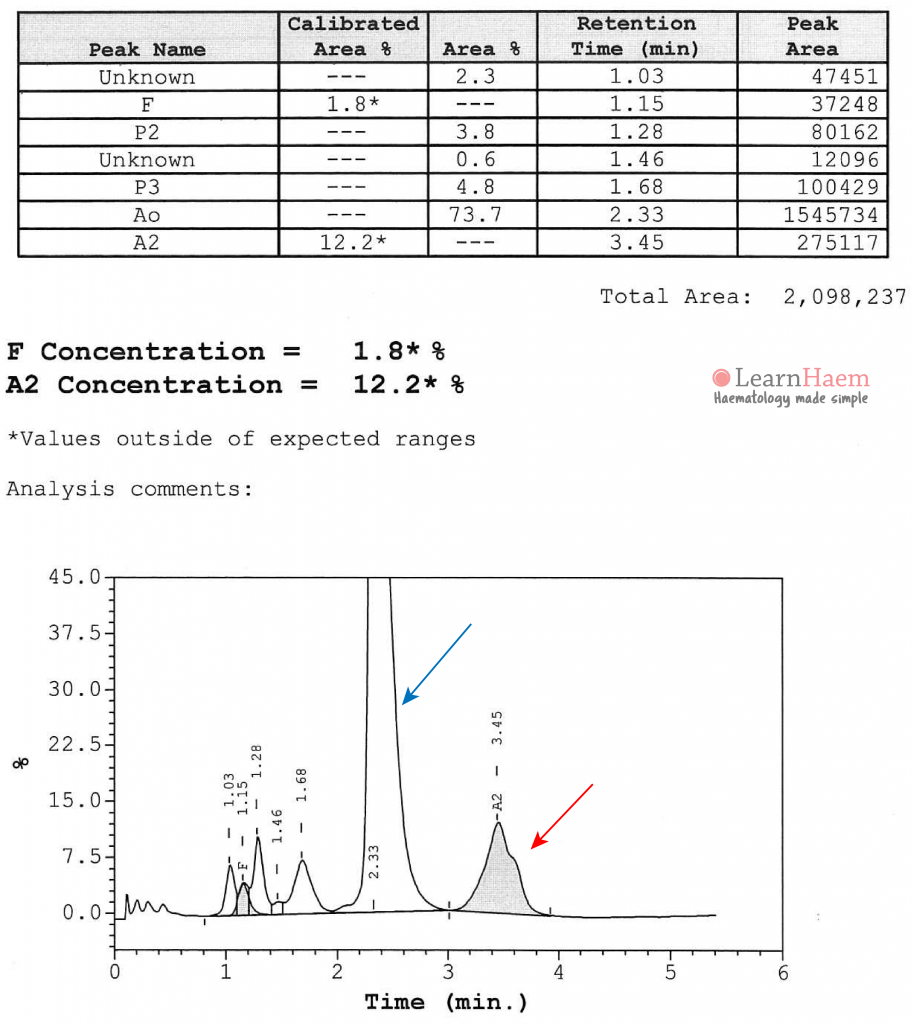Haemoglobin Lepore is a variant haemoglobin resulting from a δß gene fusion. The synthesis of the abnormal δß fusion chain occurs at a much slower rate than the normal ß chain. Hence, in the heterozygous state, Hb Lepore only accounts for ~10-15% of the haemoglobin variants. Hb Lepore can be co-inherited with ß thalassaemia, resulting in a moderate-severe thalassaemia phenotype, or HbS, resulting in a sickling disorder.


The peripheral blood film in patients with Hb Lepore trait shows microcytosis with target cells. The anaemia is usually mild.
Haemoglobin Electrophoresis

Alkaline gel electrophoresis from a patient with haemoglobin Lepore trait. There is a variant haemoglobin with the mobility of haemoglobin S (red arrow). Differentials for this variant include haemoglobins S, G-Philadelphia, D-Punjab and Lepore. The green and blue arrows represent normal Hb A2 and Hb A respectively. The sickling test is negative in patients with haemoglobin Lepore.

Acid gel electrophoresis from a patient with haemoglobin Lepore trait. The variant haemoglobin has the mobility of haemoglobin A (red arrow). This rules out haemoglobin S as a possibility for the variant seen on the alkaline gel.
HPLC

HPLC from a patient with haemoglobin Lepore trait. The variant haemoglobin has a retention time in the A2 window. This rules out haemoglobins D-Punjab and G-Philadelphia, which are in the D-window. The variant haemoglobin is quantified at 12.2%. This is not beta thalassaemia trait as the Hb A2 fraction is so high in beta thalassaemia trait. The Lepore variant is synthesized at a much slower rate than the normal ß globin chain, and hence usually accounts for ~10-15% of the total haemoglobin fraction. The haemoglobin F fraction is usually slightly elevated in Lepore trait.
Haemoglobin Lepore disease does not have any normal haemoglobin A and usually results in a phenotype ranging from thalassaemia intermedia to major.


I have hemoglobin Lepore Abnormal hemoglobin. Heterozygous Delta Beta Thalassemia.